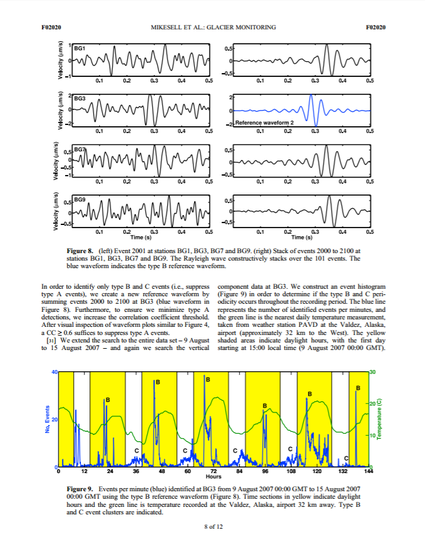
Sliding glaciers and brittle ice failure generate seismic body and surface wave energy characteristic to the source mechanism. Here we analyze continuous seismic recordings from an array of nine short-period passive seismometers located on Bench Glacier, Alaska (USA) (61.033°N, 145.687°W). We focus on the arrival-time and amplitude information of the dominant Rayleigh wave phase. Over a 46-hour period we detect thousands of events using a cross-correlation based event identification method. Travel-time inversion of a subset of events (7% of the total) defines an active crevasse, propagating more than 200 meters in three hours. From the Rayleigh wave amplitudes, we estimate the amount of volumetric opening along the crevasse as well as an average bulk attenuation ( Q ¯ = 42) for the ice in this part of the glacier. With the remaining icequake signals we establish a diurnal periodicity in seismicity, indicating that surface run-off and subglacial water pressure changes likely control the triggering of these surface events. Furthermore, we find that these events are too weak (i.e., too noisy) to locate individually. However, stacking individual events increases the signal-to-noise ratio of the waveforms, implying that these periodic sources are effectively stationary during the recording period.
Copyright 2012 by the American Geophysical Union. DOI: 10.1029/2011jf002259
Available at: http://works.bepress.com/hanspeter_marshall/9/
